Organized crime has always been a dark part of human society, with gangs led by infamous mob bosses emerging as one of modern history’s most notorious and feared criminal organizations.
Over the years, mobs have, amassed incredible wealth, controlled entire cities, and enforced their power through ruthless means. From Al Capone to John Gotti, these mafia bosses have left a horrific but interesting impact on the world and have earned their place in history for better or for worse.
In this article, we will explore the lives and legacies of some of the most famous Mafia bosses of all time.
Al Capone

Al Capone was a notorious American mafia boss and businessman who built his criminal empire in the 1920s through illegal activities. He began as a member of the Five Points Gang and worked as a bouncer in various organized crime locations when he was in his early twenties.
Johnny Torrio was his mentor in his early career and helped him grow in bootlegging. They co-founded Chicago Outfit together, previously known as the Black Hand, becoming leaders of the organization.
Capone’s rise was challenged by the North Side Gang, but he remained involved in smuggling, prostitution, and bootlegging, even after Torrio’s death. He bribed police officials, judges, and the Mayor of Chicago, and became the dominant organized crime figure in the United States.
His reputation earned him the nickname “modern-day Robin Hood”, as he donated funds to several charity groups.
However, he gained infamy when he was identified as “Public Enemy No.1” after the Saint Valentine’s Day Massacre, where he killed seven gang rivals, leading the media and the public to pressure the US government to imprison him.
In 1931, Capone was found guilty of five counts of tax evasion, resulting in an eleven-year sentence. He was released on medical parole in 1939 but died of a heart attack on January 25, 1947.
Capone’s life has inspired several books, articles, journals, and movies, including the blockbuster film The Untouchables (1987). He received many nicknames during his career, such as Scarface, Big Al, Big Boy, and Snorky.
Pablo Escobar
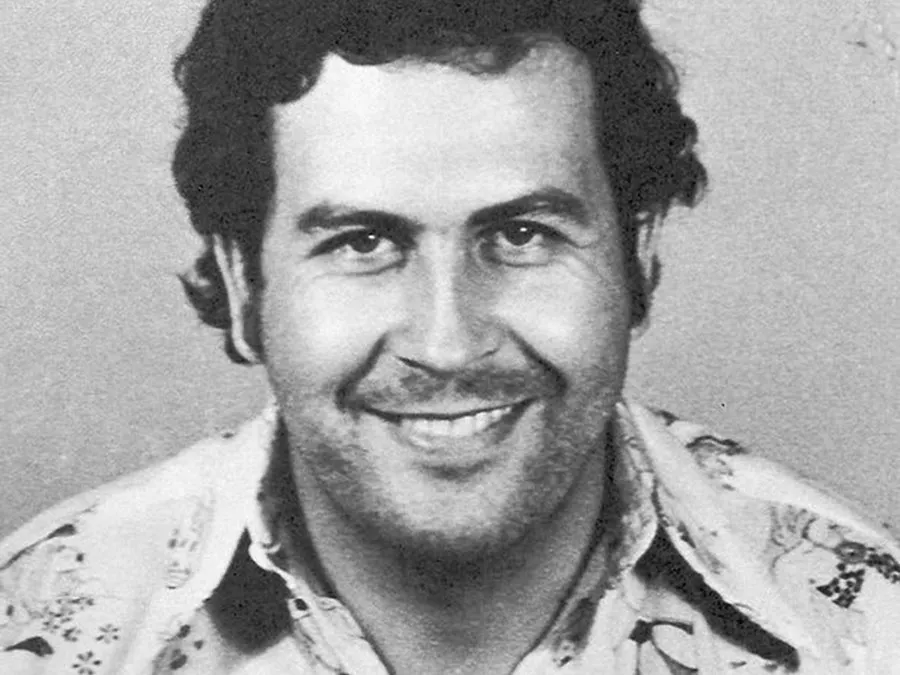
Pablo Escobar established the Medellín Cartel, a criminal organization that became prominent in the smuggling and distribution of cocaine in the US. He gained notoriety as The King of Cocaine for his success in the drug trade.
In his earlier criminal activities, he sold illegal cigarettes, fabricated lottery tickets, stole cars, and engaged in kidnapping for ransom. After learning from other mafia bosses, he formed the Medellín Cartel in 1976 to channel cocaine supply to the US. It eventually became the most prosperous drug cartel in the world, supplying up to 80 tons of cocaine daily.
The Colombion drug lord tried his hadns at politics and served on the City Council in Medéllin. He even travelled to the United States and clicked a picture in front of the White House to build his image as a legitimate politican in 1981, following which he won a seat in the 1982 parliamentary election
However, his actions led to violent confrontations with rival cartels, causing the deaths of numerous officials, law enforcement agents, and civilians.
Despite his involvement in these nefarious activities, Escobar was also known for his charitable contributions and community initiatives. This included funding the construction of housing and sports facilities.
He was convicted for planning bombings in Colombia and sentenced to five years of imprisonment. He later escaped from jail and was killed by the Colombian National Police on December 2, 1993, following a nationwide manhunt.
Frank Lucas
During his teenage years, Frank Lucas underwent training by the Harlem mob boss Bumpy Johnson and then worked for Johnson for 15 years as an American drug smuggler.
Frank Lucas established his drug ring, which became one of the most significant rings of the 20th century and broke the monopoly the Italian-American mob bosses had on the drug ring.
He became a powerful drug lord through his heroin trade and cut out the middleman by buying the drug directly from Southeast Asia’s suppliers.
In the 1970s, Lucas was making close to $1 million per day from his “Blue Magic” heroin and garnered a lot of attention from the authorities. In 1975, Lucas was convicted of drug charges, and during the raid at his New Jersey house, he was caught.
He received a 70-year prison sentence in 1976. However, due to his cooperation on drug cases as a state witness, he served only five years. Lucas died on May 30, 2019, due to natural causes.
Semion Mogilevich
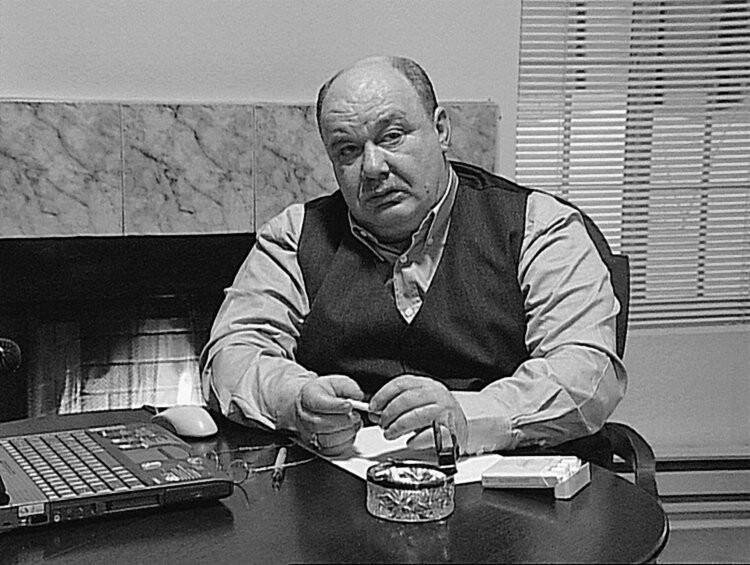
Semion Mogilevich was born in Ukraine in 1946 and joined the Lyubertskaya crime clan in the Soviet Union during the early 1970s. He later formed his own gang, the Solntsdevo syndicate, and gained infamy for stealing millions of dollars from Jews seeking refuge in Israel during the 1980s using his Israeli passport and Jewish heritage.
Mogilevich then invested the proceeds into both legitimate and criminal endeavors. Through the help of his economics education, he defrauded investors worth $150 million through the creation of fake financial records, bribing accountants, and misleading the Securities and Exchange Commission (SEC).
The FBI defines him as “deviously clever” at manipulating funds and investors. He is accused of nearly 40 criminal offenses, ranging from racketeering to wire fraud and money laundering to the filing of false documents with the SEC.
Mogilevich is also suspected of engaging in murder-for-hire schemes, drug dealing, and firearms trading, and Russia has accused him of laundering $500 million through offshore companies in connection with the Bank of New York.
He allegedly took part in a corrupt gas-importing deal in 2005 with high-level politicians in his native Ukraine but remains a free man in Russia due to support from influential allies.
Since 2009, he has been on the FBI’s top 10 most wanted fugitives list, and despite the offer of a $100,000 reward for information leading to his arrest, he remains at large.
It is believed that he currently resides in Moscow, where he is beyond the reach of US authorities due to the lack of an extradition treaty between the US and Russia. Additionally, Interpol lists him as one of Europe’s most wanted individuals.
Dutch Schultz
Dutch Schultz was an American mobster, who was born on August 6, 1901, and primarily operated in New York during the 1920s and 1930s.
He gained notoriety during the Prohibition era by smuggling liquor and beer from Canada to New York, earning him the nickname “Dutch Schultz.”
However, he became increasingly involved in more serious criminal activities such as robbing craps games and burglary. Schultz was arrested and sent to prison for attempting to break into an apartment. His mugshot was taken when he was 18 and later published in the New York City Gangland book in 2010.
In 1935, Schultz attempted to kill prosecutor Thomas Dewey who was leading the prosecution against two major tax evasion trials for which Schultz was being held responsible.
Schultz had requested permission from the Commission to kill Dewey, but they refused, and he went against them. Earlier in his career, Schultz also faced opposition from the Irish Mob led by Jack “Legs” Diamond.
Schultz was involved in various criminal enterprises such as the Noe-Schultz operation, which was a bootlegging operation in the Bronx that kidnapped and tortured one of their partners. His gang gained significant wealth and expanded across the entire Bronx. This operation was the only gang to go against the Mafia’s Five Families.
Schultz also ventured into other criminal activities such as extorting New York restaurant owners and workers. He worked through Jules Modgilewsky, also known as Julie Martin, to make deals with Waiters Local 16 and Cafeteria Workers Local 302 to extort money.
Despite his success, Schultz faced conflicts within his own gang when Vincent Coll, one of Schultz’s enforcers, demanded to be made an equal partner. The gang received a flat salary instead of the customary percentage of the take.
Schultz died on October 24, 1935, and received the last rites from a Catholic priest.
Frank Scalice
Frank Scalice, also known as “Don Ciccio” and “Wacky,” was an Italian-American mobster who was most active in New York City. He was born on September 23rd, 1893. In 1930, Scalice became the new boss of the Gambino family after the murder of Mineo and Stefano by the Castellammarese Silicans led by Salvatore Maranzano.
During the Castellammarese War, he became a firm friend and supporter of Maranzano. Later on, Maranzano organized the Five Families and Peace at the end of the war.
However, Lucky Luciano forced Scalice to resign as family boss after the murder of Maranzano in 1931 and was replaced by Vincent Mangano. In 1945, Scalice helped mobster Bugsy Seigel open the Flamingo Hotel and Casino in Las Vegas.
After the death of Manganos, Anastasia became the boss of the family, and Scalice became the underboss. On June 17th, 1957, Scalice was shot by two gunmen in the Bronx and died.
Carlo Gambino
Carlo Gambino, an Italian-American mafia affiliated with the Gambino crime family, was a notorious figure who ruled the criminal underworld for a lengthy period of time. He was famously known by various nicknames, including “The Godfather,” “Don Carlo,” “The King of the United States Underworld,” “The Dictator of New York City,” and “The King of the American Mafia.”
Gambino hailed from Sicily and was a skilled hitman for the Mafia before immigrating to the United States at 19 years old. He got caught while running bootlegging operations and served a few years behind bars. However, he managed to evade the law throughout his career.
After supporting Giuseppe Masseria during the turf wars of the 1930s, Gambino took over Vincent Mangano’s family, which later came to be named after him.
His methods involved sticking to traditional rackets such as white-collar schemes and labor manipulation and keeping away from narcotics trafficking to avoid lengthy sentences and ensuring confidentiality. He preferred to work behind the scenes whenever possible.
Gambino married his son to the daughter of another notable boss, which strengthened his position within criminal factions, helping him remain free despite constant attempts by the FBI to capture him well into the 1970s.
Following two significant events, the Apalachin Meeting in 1957 and Vito Genovese’s imprisonment in 1959, Gambino’s power grew even more.
It is said that he would even invite agents out for coffee before they could book him. Gambino remained a free man until his death in 1976 due to heart disease in Long Island.
Albert Anastasia
Albert Anastasia, also known as “the Earthquake” or “the Mad Hatter,” was a notorious Italian-American crime boss with a ruthless and fearsome reputation in American history.
After the murders of Salvatore Maranzano and Joe Masseria during the Castellammarese War, Anastasia was appointed head of his Brooklyn criminal enterprise as underboss.
Through his leadership, he turned New York Harbor into a crime-infested zone by 1951 while serving under Vincent Mangano for two decades as an underboss, succeeding him as the new boss of the Mangano crime family after his assassination.
However, his tenure was challenging as he faced a conspiracy for killing his boss, resulting in his killing in a Manhattan barbershop on October 25, 1957, arranged by Vito Genovese and Carlo Gambino.
Bugsy Siegel
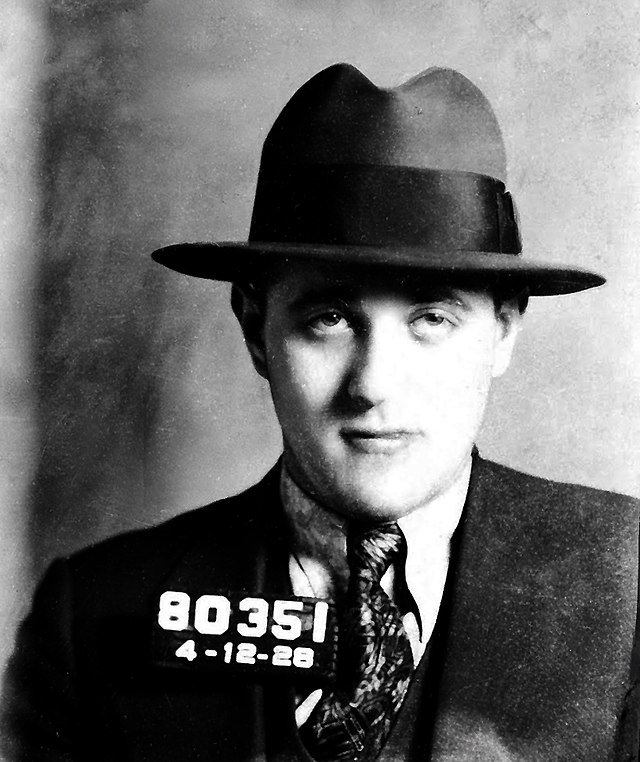
Bugsy Siegel, a Jewish-American mobster, gained notoriety as one of the first celebrity gangsters featured on the front pages of newspapers.
Siegel was heavily involved in illegal gambling, murder, and racketeering, but he also had a passion for gambling, which he transformed from illegal operations to legitimate businesses.
He acted as a hitman and enforcer for the mafia and was closely associated with Meyer Lansky, with whom he was involved in bootlegging.
Siegel’s group robbed tourists on the Las Vegas Strip for years until his death. In 1936, Siegel moved to California, where he became involved in building casinos for mob bosses from the East Coast, participating in racketeering, befriending numerous Hollywood celebrities, and achieving widespread notoriety.
However, on June 20, 1947, Bugsy Siegel was gunned down by a hitman while staying at his girlfriend’s home in Beverly Hills.
Vito Genovese

Vito Genovese, an Italian American mobster born on November 21, 1897, played a crucial role in the rise of the Mafia in America through his participation in the Castellammarese War.
He obtained power during Prohibition by acting as an enforcer in the American Mafia and collaborated with Luciano to expand the heroin trade internationally. Through this association, the Luciano crime family was renamed as the Genovese crime family after he assumed its leadership.
Genovese was implicated in the murder of Albert Anastasia and the attempted murder of Frank Costello, an action to become the boss of bosses, but he managed to flee to Italy to avoid charges of murder. He was later arrested and convicted of narcotics conspiracy, leading to a 15-year sentence in prison.
In a move that displays his Machiavellian character, Genovese bribed fascist party members, befriended them, and provided cocaine to Galeazzo Ciano, Benito Mussolini’s son-in-law.
After World War II, he donated nearly $4 million to Mussolini’s party and was decorated with the Order of Saints Maurice and Lazarus. When enemies invaded Italy shortly afterward, Genovese switched sides to offer help to the US Army, earning him the position of interpreter officer at the US Army HQ in Naples.
He passed away from a heart attack on February 14, 1969, while at the United States Medical Center for Federal Prisoners in Missouri.
Joe Masseria
Giuseppe “Joe the Boss” Masseria, an Italian-American Mafia boss, was born on January 17, 1886, to a family of tailors. He joined the Morello Crime family of Harlem in 1902 and was arrested for third-degree burglary with a charge of 4 to 6 years imprisonment on May 23, 1913.
By the 1920s, he went against his boss Salvatore D’Aquila for power. During this time, D’Aquila’s gunman Umberto Valenti was ordered to assassinate Masseria, but he escaped becoming the new boss of the rival Morello family.
Masseria was attacked again on August 9, 1922, but he was able to escape the attack by hiding in a store while the gunmen were firing outside. This gained him respect among gangsters as “the man who can dodge bullets,” and his reputation started rising as D’Aquila began to fall.
After becoming the head of the Morello family, Masseria became known as “Joe the Boss” and was selected as the new capo dei capi after D’Aquila’s murder. He applied pressure on other mafia gangs for financial tributes and called out Nicolo Schiro for committing a transgression, demanding ten thousand dollars to step down as the leader of his mafia crime family. This resulted in the Castellammarese War between 1930 and 1931.
Masseria fought in the Castellammarese War in 1930 to take over criminal activities in New York City. However, on April 15, 1931, he was murdered by his lieutenant, Charles “Lucky” Luciano, in an agreement with his rival Salvatore Maranzano.
John Gotti
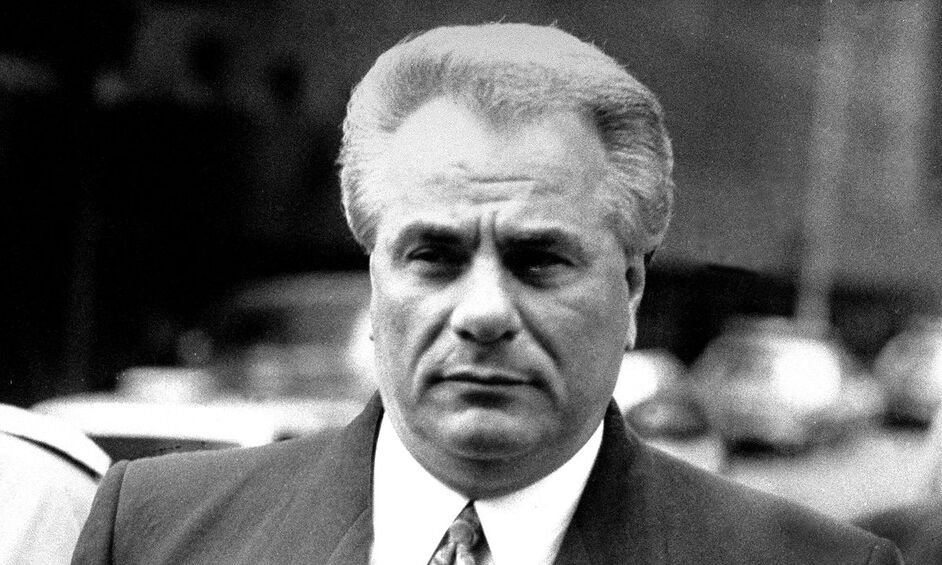
John Gotti, also known as “The Dapper Don,” achieved tabloid celebrity status for his swagger and expensive suits, despite his involvement in criminal activities. He was the boss of the Gambino crime family based in New York City and began his criminal career at 12 years old working for Carmine Fatico.
Despite joining the Gambino family, Gotti continued his heroin business, which went against the family’s ethics. The Gambino family only discovered this in 1985, causing chaos.
To save himself and his business team, Gotti planned and organized the murder of Paul Castellano, leading him to become the head of the Gambino family and the most powerful crime boss in America during the 1980s.
Gotti earned millions through illegal means such as loan sharking, prostitution, illegal gambling, and narcotics distribution. However, he was finally imprisoned in 1992 for five counts of murder, tax evasion, and racketeering.
Salvatore Gravano, Gotti’s underboss, helped the FBI to capture Gotti, and though he was in prison, Gotti continued his criminal activities with the help of his brother Peter and son Jr. Gotti died of throat cancer in 2002.
Joseph Colombo
Joseph Anthony Colombo, a member of the Five Families of the American Mafia in New York, was born on June 16, 1923, in New York City.
In 1970, he founded the Italian-American Civil Rights League and organized the first Italian Unity Day rally at Columbus Circle to protest the mistreatment of Italians. The Civil Rights League gained popularity and Colombo appeared in various TV interviews, speaking events, and fundraisers.
Additionally, Colombo assisted Paramount Pictures with their movie, The Godfather. However, the film excluded certain Mafia-related terminology like “Mafia” and “Cosa Nostra.”
Earlier in his life, Colombo became a capo and one of the top enforcers for the Profaci family. After the death of Profaci, he was instructed by Magliocco to assassinate Gambino and Lucchese, which he revealed to the rival families.
In exchange for this information, The Commission spared his life but made him retire from the position of Profaci’s boss and pay a fine of $50,000.
On May 22, 1978, Colombo passed away from a Cardia arrest at St. Luke’s Hospital in New York.
Vito Rizzuto
Vito Rizzuto, also known as “Montreal’s Teflon Don,” was a well-known crime boss of the Sicilian Mafia in Canada. Born on February 2, 1946, he gained power over his criminal empire by importing and distributing illegal drugs, such as heroin, cocaine, and hashish. He also participated in money laundering, loansharking operations, and various other crimes.
One of his most infamous acts was carrying out the murder of three rival capos in New York City in 1981 under orders from Joe Massino of Bonanno. As a result of his involvement, Rizzuto was questioned by a Brooklyn federal grand jury and later sentenced to ten years in prison in 2004, but was eventually released in 2012.
Throughout his career, Rizzuto married Giovanna Cammalleri, the daughter of a mobster named Leonardo Cammalleri, which only increased his power and connections within the criminal world. Additionally, he faced several charges throughout his life, including planning to commit arson and plotting the import of Hashish into Canada.
Regrettably, Rizzuto passed away on December 2, 2013, due to complications from pneumonia brought on by lung cancer. His funeral was attended by around 800 people at the Madonna della Difesa.
Griselda Blanco

Griselda Blanco, born on February 14, 1943, started her journey as a prostitute and pickpocketer, but later on, became one of the most notorious Colombian drug lords controlling the Medellín Cartel.
With several aliases, such as La Madrina, the Queen of Narco-Trafficking, the Black Widow, and the Cocaine Godmother, Blanco was a Miami-based cocaine drug trade pioneer, active in the underworld between the 1980s and early 2000s.
During her peak, she was considered one of the wealthiest women globally, earning $80 million per month. Blanco was also known for her involvement in 200 murders while smuggling cocaine to New York, Miami, and Southern California. She gained a net worth of $2 billion, making her the first-ever billionaire female criminal by 2012.
Despite being married four times and raising four children, she eventually became one of the deadliest women in history due to her multi-billion dollar drug trafficking empire.
Blanco went to buy meat at the Cardiso butcher shop, located at the intersection of 29th Street in Medellín, on the evening of September 3, 2012. Tragically, she passed away at 69 years of age after being shot in the head and shoulder by a motorcyclist outside the shop.
Meyer Lansky
Meyer Lansky’s incomparable influence has secured his place in the annals of organized crime’s history. His long career, which spanned from 1911 until 1970, encompassed almost all major criminal organizations across the United States, Cuba, and Mexico.
Upon immigrating to America in 1911 from Russia, Lansky immediately became involved in pre-Prohibition and Prohibition-era bootlegging campaigns in New York.
He joined forces with Bugsy Siegel and Lucky Luciano, utilizing their partnerships to create a network of far-reaching casinos and purported banks that extended from New York to London, Switzerland, Cuba, and the Bahamas.
Lansky, often referred to as “the Mob’s accountant,” employed his cool-headed temperament and financial acumen to fund various operations secretly while pushing his agenda forward. Following Luciano’s acquisition of power in the early 1930s, Lansky became beneficial in advancing his position in not only his nodes but also his fellow bosses’ networks.
After the end of Prohibition, Lansky gradually shifted his focus to gambling and began working with Siegel in the 1940s to establish the Flamingo Hotel, which he took control of following Siegel’s assassination.
Lansky lived by maintaining a low profile and enjoying the high life until he was arrested and accused of federal tax evasion charges in 1970. Subsequently, he attempted to flee to Israel, but American authorities accepted him to face the allegations against him. Although he was eventually acquitted, severe health issues had already consumed him; he passed away in 1983, leaving just $35,000 in retrievable assets though speculations about his hidden wealth have persisted.
Sam Giancana
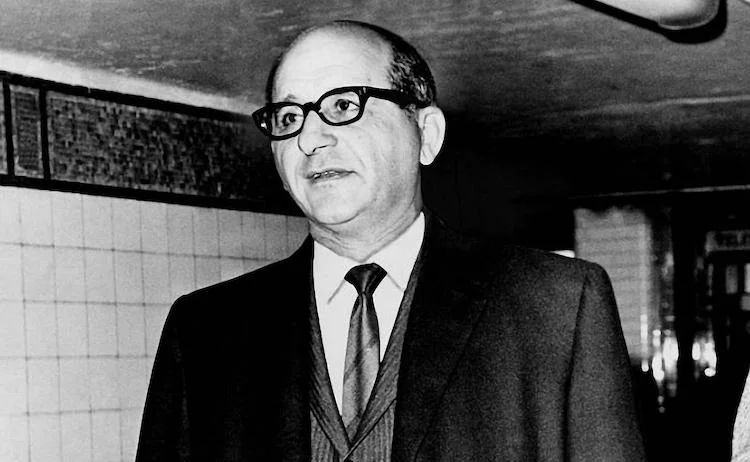
Samuel (Sam) Mooney Giancana, born on May 24, 1908, was a notorious American mobster and the son of Italian immigrant parents. In the late 1930s, he joined the Chicago Outfit and worked as an active member of the group responsible for lottery payouts in Chicago’s African-American community in the early 1940s. His dedication to the gang led him to become its boss in 1975.
Giancana was a member of the 42 Gang, where he oversaw illegal gambling operations, formed political rackets, and distributed liquor in Louisiana between the 1940s and 1950s. In 1960, the CIA recruited Giancana to assassinate Fidel Castro, the Cuban leader and was believed to have played a part in John F. Kennedy’s presidential victory that same year.
However, Giancana was later linked to Kennedy’s assassination and other Mafia leaders, including Carlos Marcello and Santp Trafficante Jr. In 1966, he fled to Mexico to avoid a grand jury’s questioning about arms smuggling to the Middle East for the Israeli Mossad through Panama.
Giancana was apprehended in Mexico and sent back to the US in 1974. Unfortunately, on June 19, 1975, he was assassinated after being shot seven times in the head and neck.
Charles “Lucky” Luciano

Born in Sicily in 1897, Charles “Lucky” Luciano moved to the United States with his family at the young age of 10 and became a notorious gangster. He had already gained notoriety within the New York criminal justice system by the age of 14, earning his nickname due to his ability to evade dangerous situations and remarkable gambling luck.
Luciano soon rose to a leadership position in the Five Points Gang by 1916, and by the 1920s, he was running bootlegging operations with infamous figures such as Bugsy Siegel and Meyer Lansky.
He supported Salvatore Maranzano in the Catellammarese War between rival crime families in New York in 1928, eventually becoming Maranzano’s lieutenant after he won. Later, he assassinated Maranzano and claimed the top spot in the New York Mafia. This led to the establishment of the Five Families system that continues to operate to date.
In 1936, Luciano was arrested for facilitating prostitution and was sentenced to 30-50 years in prison. After his release, he was deported to Sicily but later moved to Naples, where he retained some influence over the Five Families from a distance until his successor, Vito Genovese, took over. Luciano died and was buried in the United States in 1962.
Frank Costello
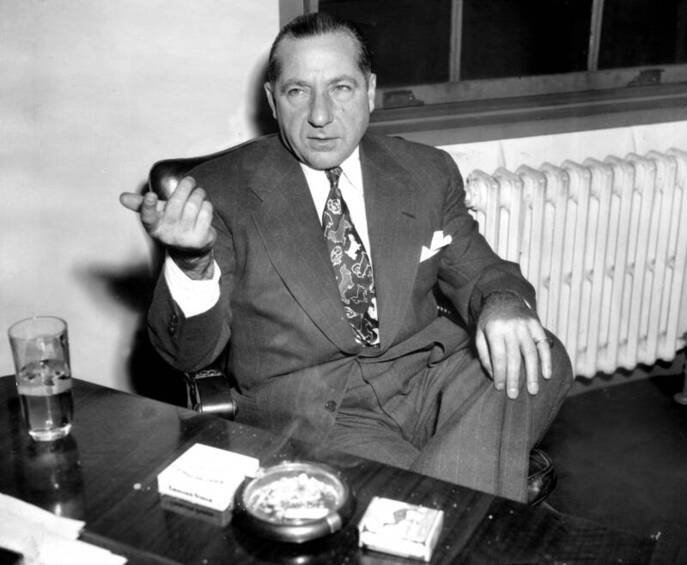
Frank Costello, the third member of the trio of mobsters involved in establishing the Five Families in New York, collaborated closely with Lucky Luciano and Vito Genovese for an extended period. However, he was eventually overshadowed by both of them. He played a significant role in constructing and broadening the family that was later named after Vito Genovese, and he gained financially from this for most of his life.
Costello was of Italian descent and migrated to the United States in 1895. He soon became an active member of Lower Manhattan’s Five Points Gang and was arrested on several occasions until 1918. It was not until forty years later that he would be arrested again.
One of Costello’s key sources of power was his association with Irish bootleggers, led by Bill Dwyer. Both Costello and Dwyer were apprehended for importing liquor IN 1926, but only Dwyer was found guilty, enabling Costello to take charge of Dwyer’s operations.
Dwyer’s subordinates strongly opposed Costello’s management, but despite losing some business, he continued to be a successful rum runner.
In the 1930s, Luciano, Genovese, and Costello played both sides of the Maranzano vs. Maseria turf war. After Luciano gained control, he established the Five Families with Genovese as his right-hand man and made Costello his chief adviser, securing him the third most powerful position in the mob.
With increased influence, Costello expanded gambling and prostitution rackets to Louisiana and created legitimate businesses under Mafia control. His reign was eventually disrupted when a series of trials exposed his nervous habits and revealed that Costello had seen a psychiatrist, tarnishing his image of calm power.
Frank Costello was imprisoned for years until Genovese ordered a hit on him, which left him shot in the head but alive. He retired and relinquished control to Genovese, remaining a passive overseer of certain gambling operations until his death by natural causes in 1973.
Salvatore Riina
Salvatore Riina, also known as Totò ‘u Curtu, was an Italian mobster who became chief of the Sicilian Mafia after succeeding Luciano Leggio in the mid-1970s. He gained dominance through violent acts which led to the police targeting his rivals.
Riina was infamous for his brutal murder campaign that involved assassinations of Antimafia. Together with Leggio, he increased the power and force of the Corleonesi criminal organization after the death of Michele Navarra in 1958, by finding and assassinating Navarra’s supporters and hiding themselves to evade arrest.
In 1969, Riina and Leggio were tried for murders committed earlier but were cleared of guilt by intimidating jurors and witnesses.
During the Second Mafia War, Riina and Leggio killed almost a thousand people as they wiped out their enemies along the way. Riina had relationships with local political figures, such as the mayors of Palermo, Vito Ciancimino, and Salvatore Lima, who benefited him mutually.
As an informant, Tommaso Buscetta talked to anti-Mafia judge Giovanni Falcone and revealed that the Mafia was a single organization led by a Commission and established that the highest Mafia members were involved in all the organization’s crimes. This led to the arrest and conviction of 333 Mafia members in the Maxi Trial.
To divert attention from the investigation, Riina ordered the murder of 17 people and left 267 wounded in an event known as the “Christmas Massacre.” Riina died of cancer on November 17, 2017.
